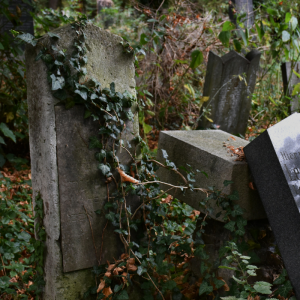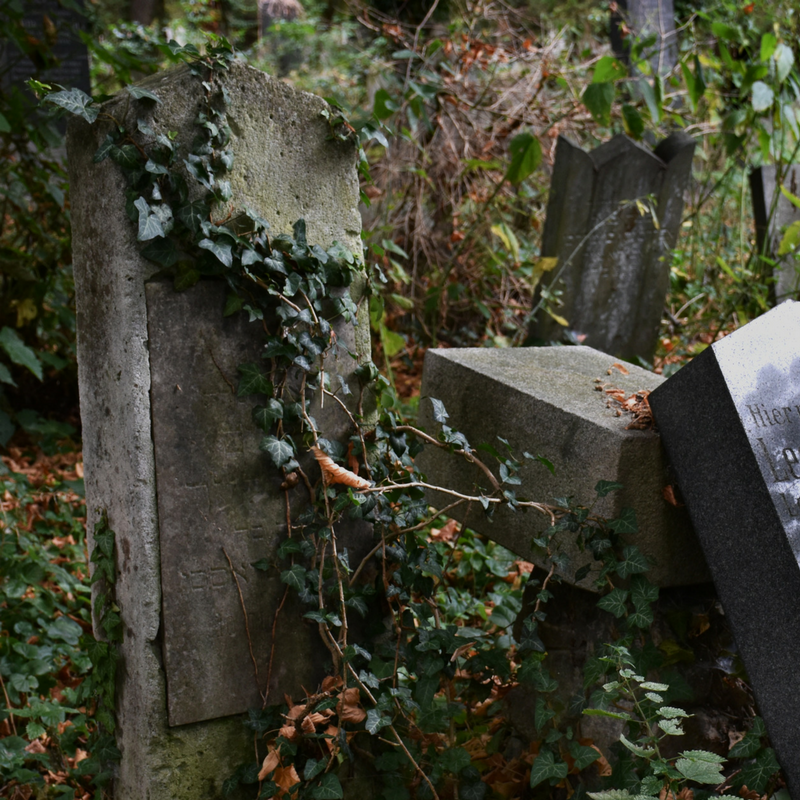
Top Ten Lost Tombs Still to be Found
Article written by Duncan Burden
In this modern age it is hard to believe that there are any famous lost graves to be discovered, but this has proven not to be true, especially when given the fact the body of the famous English King Richard III, immortalized by William Shakespeare, was discovered under a car park in 2012. Even so, you may be surprised to know that the graves of several famous characters from history are still to be found!
Below is a list of the Top Ten Tombs. Will they ever be found?
1) Tomb of Alexander the Great
Although known as Alexander the Great, he was Alexander III of Macedon, who reigned from 356 BC to 323 BC, yet spent the vast majority of time expanding his empire on a military campaign that swept through Asia and northeast Africa.
Alexander’s body was said to be laid in a gold sarcophagus which was filled with honey, and then encased in another larger golden casket. Records show that his casket was on its return to Macedon, when it was captured on route and eventually taken to Alexander in Memphis. Yet in the 3rd or 4th century it is believed to have been taken to Alexandria, but its final resting place has been lost or forgotten to history.
2) Tomb of Queen Boudicca
Boudicca was the queen of the Iceni tribe, a famous British Celtic tribe that were focal in an uprising against the occupying forces of the Roman Empire AD 60 or 61. After the death of her husband, and cruelty inflicted on her and her daughters by the Romans, it rose Boudicca into a warrior queen who managed to fight the Roman might all the way to Londinium (London).
Eventually the Roman forces succeeded and Boudicca lost. How she died is unknown, but it is generally believed that she committed suicide to avoid capture. Some accounts describe her as dying from an illness. The Roman’s were meticulous record keepers, but no record exists of them ever taking Boudica prisoner, recovering her body or record of her burial. If she didn’t die alone, or died amongst numerous dead, both unlikely for her to be felt or un-noticed, given her status and importance, then it is likely she was given a full Celtic funeral – along with treasures as gifts – where has yet to be confirmed.
3) The Tomb of Genghis Khan
Genghis Khan was the founder of the Mongol Empire, reigning till he was 65 in the year 1227. His empire covered what is now China, Korea, Central and Southwest Asia and large areas of Eastern Europe. He founded the empire through military campaigns often resulting in huge massacres of indigenous people and governed them through fear and terror.
Little is known of his death. Various stories exist such as sickness, being killed by Xia troops, dying of battle injuries and falling off his horse. A later story arose that he was murdered by a local princess after taking her as his trophy. Unfortunately, the cause cannot be confirmed due to the fact that, following Mongol tradition, he was buried in an unmarked grave, with the men escorting his body, killing anyone in their path who might reveal the location of the Great Khan’s grave.
4) The Tomb of Nefertiti, Queen of Egypt
Neferneferuaten Nefertiti was a famous Egyptian Queen and the Great Royal Wife of the Pharaoh Akhenation in the 14th century BC. She is believed to have reigned briefly on her own just before Tutankhamen. Although famous for these royal links, she became a national icon through the discovery of her bust which is now in the Berlin Neues Museum.
Due to her fame, many theories exist regarding her own death and burial, and a common theory is that she could be one of two mummies found inside the tomb of Amenhotep II, but this is only a theory. As such, an actual tomb of Nefertiti, a ruler in her own right, has not yet been found.
5) Alfred, King of Wessex, Grave site
Following the discovery of Richard III, another English monarch waiting to be found is Alfred, King of Wessex. Commonly known as Alfred the Great , this noted Englishman became the King of Wessex from 871 to 899. Who, through his successful defending of his land from Viking invasion, virtually unified England to a single kingdom.
Although his life seemed to be plagued with bad health, it is unknown how he actually died, but it is assumed it was through illness.
He was originally buried at Winchester, then was moved to the New Minster, but then taken to Hyde Abbey. There he rested without incident until dissolution of the abbey in 1539. Although the church was demolished, the graves remained intact. When the site was being prepared for the construction of a prison, it is believed that the altar area was excavated and that coffins were found, of which the lead was stripped and the bones were scattered and lost.
The prison was itself demolished between in the middle of the 19th century, and bones have been found, none of which have yet proven to be that of the Great Monarch.
6) Attila the Hun Tomb
Attila was the ruler of the Huns from 434 to 453, ruling a rough and crudely defined empire spanning Central and Eastern Europe.
In a historic account of Attila’s funeral it is said that he was buried in the secrecy of night and that his coffins were first bound with gold, then with silver, and then with the iron. In addition, it says that he was buried with the weapons won in battle, rare gifts sparkling with various gems, and ornaments. Then to ensure the secrecy of the tombs location, all those who helped in the burial were killed. His tomb has never been found.
7) Thomas Paine’s Grave
The author and political philosopher Thomas Paine wrote such works as “Common Sense”, “The American Crisis”, “The Rights of Man” and “The Age of Reason.” He was a resounding influence on the French and English Revolution. Paine died at the age of 72, in New York, but his body was taken to New Rochelle as per the details of his will.
Unfortunately the Quaker authorities refused to allow his burial at their graveyard and so his remains were buried under a walnut tree on his farm. In 1819, an Englishman named William Cobbett dug up Paine’s bones and took them back to England with the intent to rebury them there. This was never completed, and although the bones remained in Cobbett’s possession, they ultimately were lost – waiting to be re-found.
8) Grave site of Leonardo da Vinci
This master of the Renaissance needs little introduction. What may not be so commonly known is the question of where his body really is. Originally he was buried in a church that was destroyed during the French revolution in 1789, which caused his remains to be reburied in the castle’s smaller chapel of Saint-Hubert in 1874.
Yet, given the delay and damage, as cautionary note lays on the inscription on this tomb, stated that these are only the “presumed” remains of this Master Artist and Inventor. Giving the advancements in DNA recognition, even used to confirm the authenticity of Richard III, then perhaps da Vinci is still laid somewhere else?
9) Mozart’s Grave
Just like the historic fame of Leonardo da Vinci, this Austrian composer needs little introduction. Yet his grave is lost. His funeral arrangements were made by his friend and patron Baron Gottried van Swieten, who arranged for him to be buried in a common grave at the St. Marx Cemetery outside Vienna. A ‘common’ grave meant that it wasn’t a communal or pauper’s grave, but simply that it was an ordinary grave location like those commonly used today.
The trouble is that ordinary graves, under the local law, could be dug up and reused after ten years. As such, Mozart’s grave disappeared, along with his body. This could mean his remains have disappeared forever, but theories still remain that his fame ensured that devotees would/could have saved his corpse from total disregard and either relocated it, or kept it as a relic – and like the bones of Paine, are lost, waiting to be re-discovered.
10) Tombs of Cleopatra and Mark Anthony
If the lost remains of Paine or Mozart seem unlikely treasure ever to be found, here is a double-bill to end the list; The historic lovers; the famous Egyptian Queen Cleopatra and her Roman General Mark Anthony.
The ancient historian Plutarch wrote that Cleopatra was buried with Mark Antony in an undisclosed location. Some evidence suggests that she had a tomb built for herself prior to her death by asp, and that tomb is now resting on the ocean floor with the rest of ancient Alexandria. On the other hand, recent excavations at the Taposiris Magna temple in Abusir, Egypt, may point to the famous couple being buried there – but we are yet to learn if the lost tomb has really been found.
~Article written by Duncan Burden
Duncan Burden enjoys researching history and discovery. Although he often writes on Masonic issues, since he has been a Freemason for most of his adult life and is a member of various Masonic bodies, such as the Royal and Select Master Masons, and Operative Masons, he takes pleasure in writing on all historic, mysterious, and exciting topics.
He was born on the Norfolk Coast, and now lives in Hertfordshire, England.


I remember a story about Mozart’s grave actually being discovered a while back. The people that found his casket opened it up and were completely surprised to not only find him but that he was sitting up frantically erasing some of his music! They asked him what he was doing and he told them…
“I’m decomposing.” 🙂
Wow! Such famous individuals…and we don’t even know where they were buried…or entombed…etc.
I’m glad that…at least…we know something about them during their lifetimes.
It’s good that somebody wrote something down…and recorded some history.
Thanks, Duncan and Jenny.
I can see the fascination with being buried or entombed but that seems kinda complicated nowadays. I found an arrow in a tree that had an inscription written with permanent marker. It seemed the deceased had talked his hunting partner into putting some of his ashes inside the hollow aluminum shaft and flinging it into his favorite hunting grounds. I left it where I found it.
Interesting circumstance, Crimson.
I wonder if the deceased liked Longfellow. It seems…
https://www.poetryfoundation.org/poems/44624/the-arrow-and-the-song
“Ode to Peggy Jean”.
Could have been, there was a lot of information on that arrow, like where he was from and his birth and death date. His partner traveled a long ways to fulfill his wishes. I don’t know that I will ever get to watch a arrow fly again, the doctor was not too positive after my surgery but I am optimistic. There is a certain serinity flinging arrows around like the Indians did.
Sorry to hear that, Crimson.
I’ll be praying for you…and hoping that you do get to see some arrows fly again.
There is a lot of Peace out there…under a Big Sky.
Your story reminded me of a place I briefly stopped by to take a photo of and had to go back into the vehicle because it was raining.
I hope you’ll get to prove your doctor wrong, Crimsonblaze.
An honorable mention should be given to Adolf Hitler
Jimmy Hoffa, though not so famous.
Another honorable mention: Osama Bin Ladin
Does the U.S. government really expect us to believe they just dumped his body into the ocean?